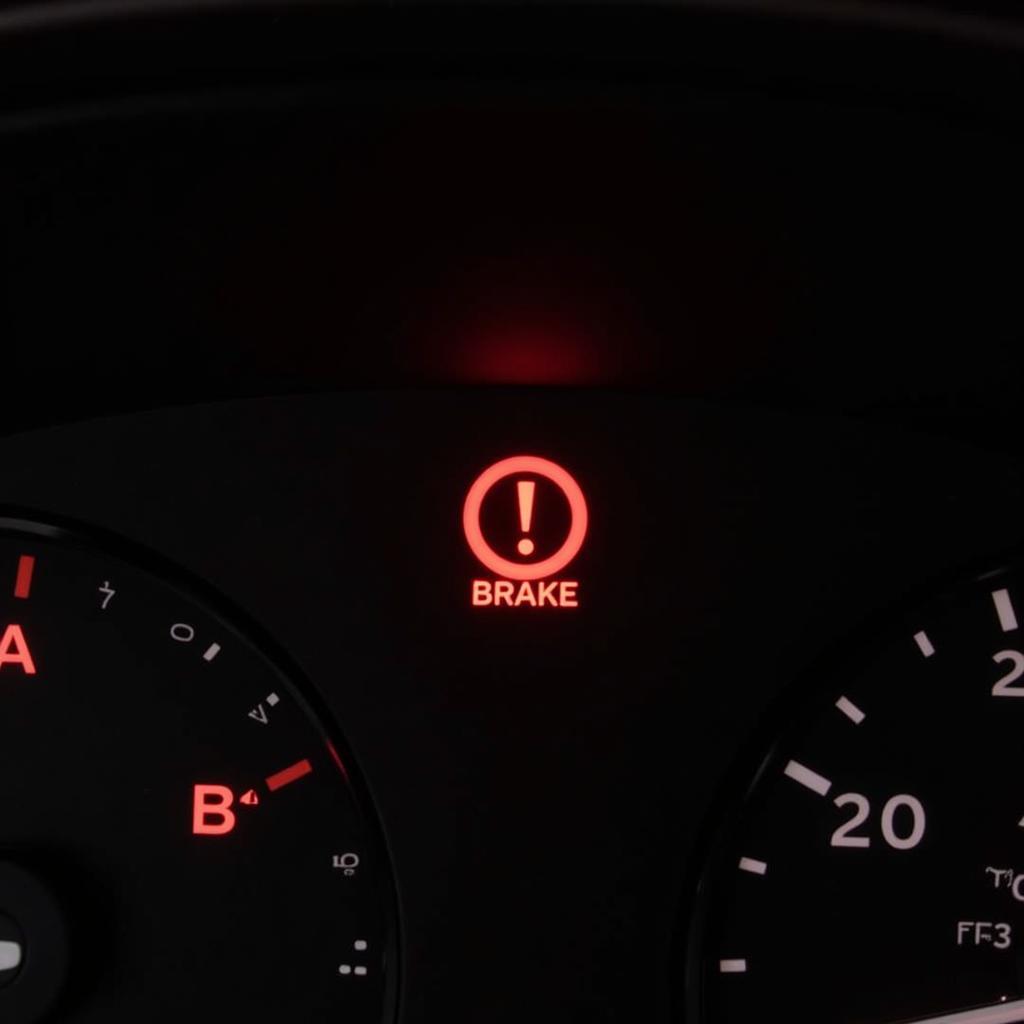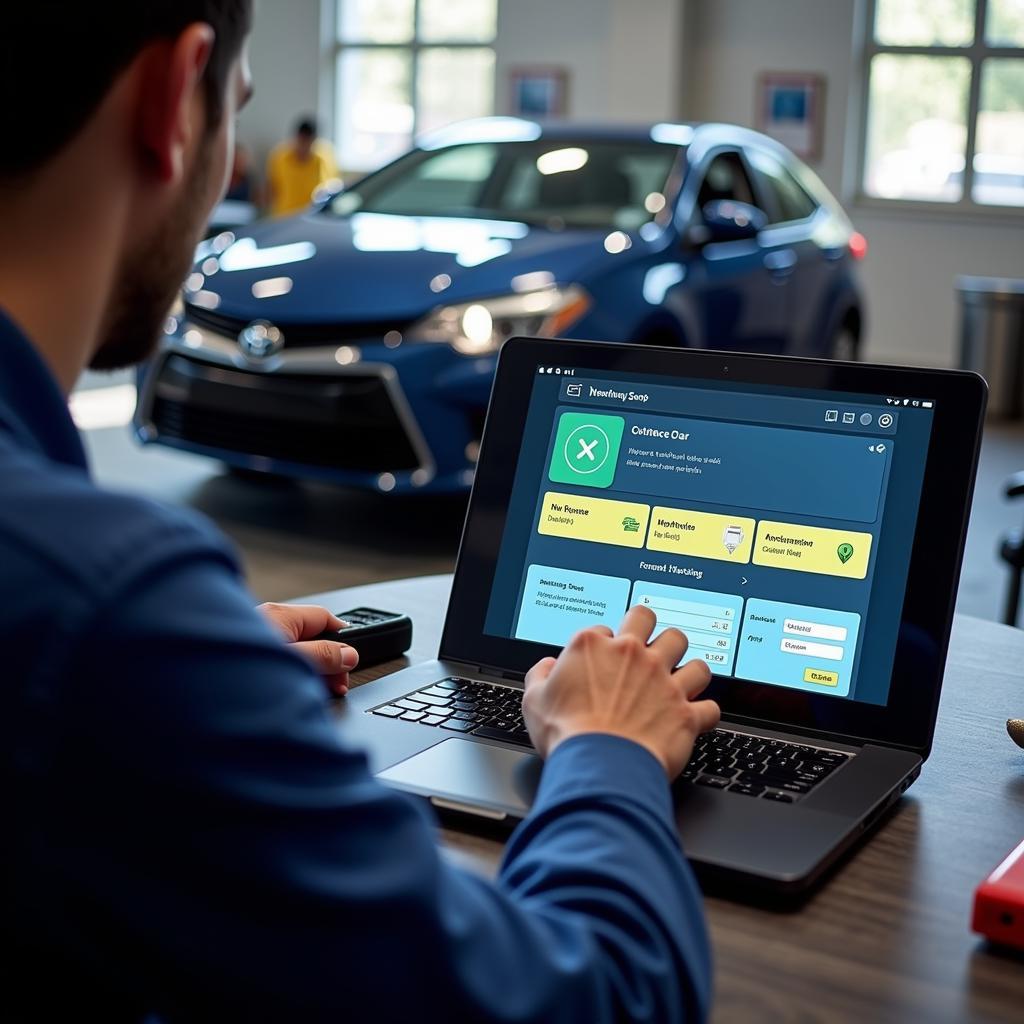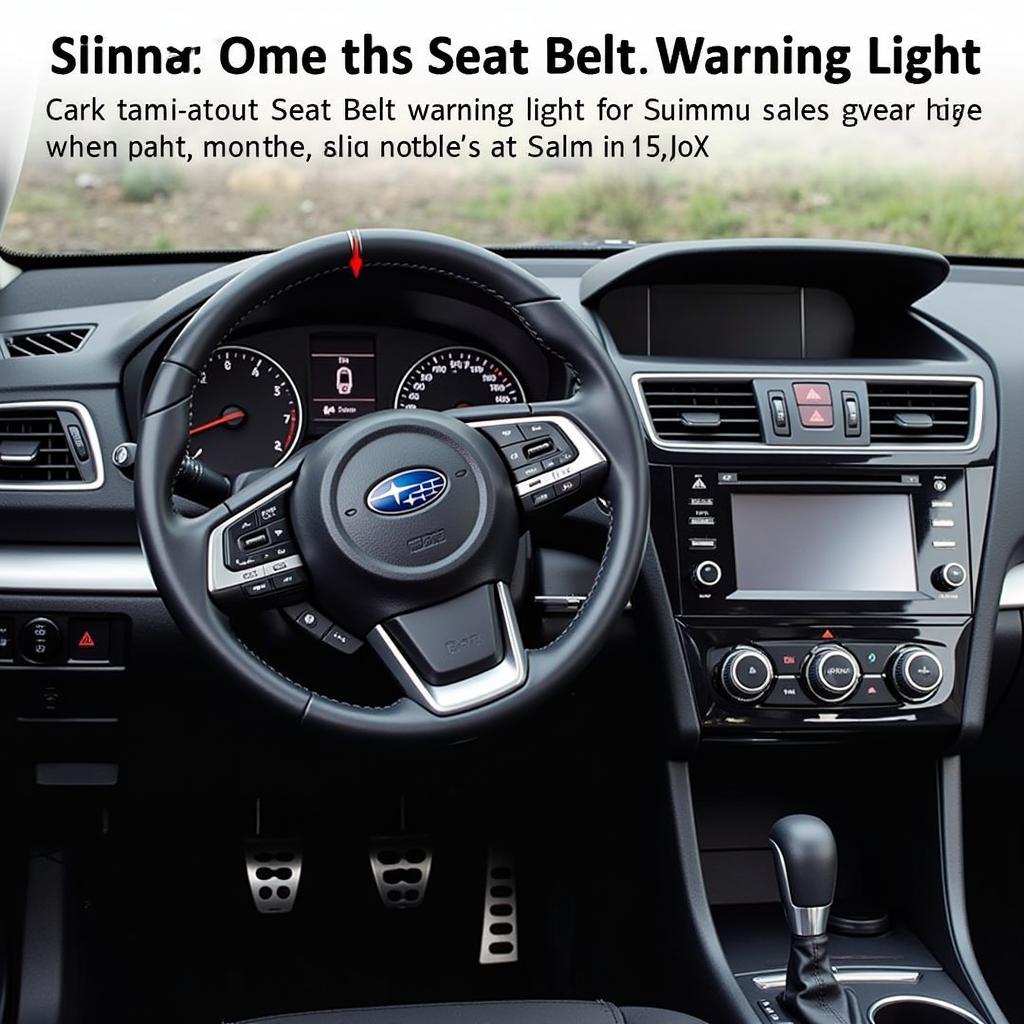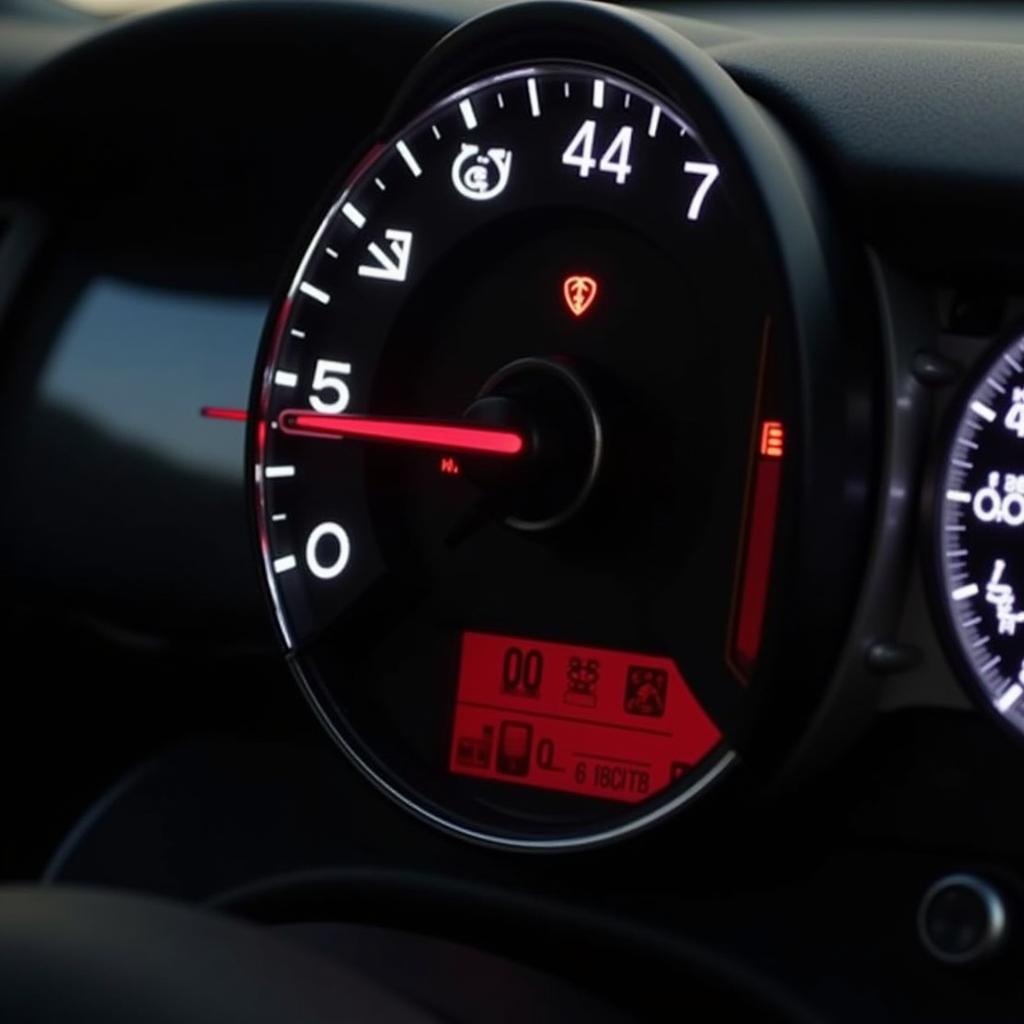The “warning switch brakes” light on your dashboard is a crucial safety indicator, signaling potential issues with your braking system. Ignoring this warning could lead to serious consequences. This article provides a comprehensive guide to understanding, diagnosing, and resolving problems related to the brake warning light, empowering you to maintain your vehicle’s safety and performance. We’ll cover everything from common causes to advanced diagnostics and remote software solutions.
You might be experiencing a brake warning light issue similar to the one described in the article about a 2004 Ford Explorer brake warning light.
Understanding the underlying causes of brake warning light activation is the first step toward effective troubleshooting. Several factors can trigger this warning, ranging from simple issues like low brake fluid to more complex problems like faulty sensors or ABS malfunctions. A thorough understanding of these potential causes is essential for accurate diagnosis and repair.
Common Causes of Brake Warning Light Activation
Several common issues can trigger the brake warning light. These include:
- Low Brake Fluid: This is the most frequent culprit. Low brake fluid can indicate a leak in the brake lines or worn brake pads.
- Parking Brake Engaged: Sometimes, the simplest explanation is the correct one. Make sure your parking brake is fully disengaged.
- Faulty Brake Light Switch: The brake light switch is responsible for activating the brake lights and can also trigger the warning light if malfunctioning.
- ABS Issues: Problems with the Anti-lock Braking System (ABS), such as a faulty wheel speed sensor, can activate the warning light.
- Worn Brake Pads: Worn brake pads can trigger a sensor that activates the warning light, indicating the need for replacement.
 Brake Warning Light on Car Dashboard
Brake Warning Light on Car Dashboard
Diagnosing the Problem
Identifying the specific cause of the brake warning light requires a systematic approach. Start with the simplest checks:
- Check the parking brake. Ensure it’s fully released.
- Inspect the brake fluid level. Top it off if necessary. If the fluid level drops quickly, suspect a leak.
- Check your brake lights. If they’re not working, the brake light switch might be faulty.
For more complex issues, you may need specialized diagnostic tools or professional assistance. Remote diagnostics and software solutions are increasingly valuable in identifying and resolving these problems efficiently.
Remote Diagnostics and Software Solutions
Modern vehicles rely heavily on software and electronic systems. Remote diagnostics and software updates can often address brake warning light issues without requiring a physical visit to a repair shop. These solutions allow technicians to access your vehicle’s systems remotely, diagnose problems, and even reprogram certain components.
A scenario similar to the 1973 VW Superbeetle brake warning circuit might benefit from modern remote diagnostics. Even though the technology wasn’t available then, it illustrates the complexities of these systems. Similarly, the availability of a 2006 Silverado low brake fluid warning switch for sale highlights the importance of readily available replacement parts.
 Technician Performing Remote Diagnostics on a Car
Technician Performing Remote Diagnostics on a Car
Preventing Future Issues
Regular maintenance is key to preventing brake warning light issues. This includes:
- Regular brake inspections: Have your brakes checked at least once a year or as recommended by your vehicle’s manufacturer.
- Timely brake pad replacement: Replace brake pads before they wear down completely.
- Brake fluid flushes: Flush your brake fluid according to your vehicle’s maintenance schedule.
- Addressing warning lights promptly: Don’t ignore the brake warning light. Addressing it quickly can prevent more serious problems.
“Consistent brake maintenance is crucial for safety and can significantly reduce the likelihood of encountering warning light issues,” says John Smith, Automotive Engineer at Leading Auto Solutions. “Proactive care extends the life of your brakes and enhances overall vehicle reliability.”
Conclusion
The “warning switch brakes” light is a vital safety indicator. Understanding its potential causes and taking prompt action can prevent costly repairs and ensure your safety on the road. Regular maintenance and utilizing advanced diagnostic tools like remote software solutions are essential for maintaining optimal brake performance. Don’t delay addressing this critical warning; your safety depends on it.
You might find this information helpful if you are dealing with a situation similar to the 03 BMW K1200RS solid warning brake light issue or the 2013 Ford Fusion electric parking brake warning.
FAQ
- What does the brake warning light mean? The brake warning light indicates a potential problem with your braking system, such as low brake fluid or a fault in the ABS.
- Is it safe to drive with the brake warning light on? It’s not recommended. Have your brakes inspected as soon as possible.
- Can I fix the brake warning light myself? Simple issues like low brake fluid can be addressed easily. More complex problems require professional expertise.
- How much does it cost to fix a brake warning light issue? The cost varies depending on the underlying cause.
- How can remote diagnostics help with brake warning light issues? Remote diagnostics allow technicians to quickly identify problems and sometimes fix them remotely through software updates.
- How often should I have my brakes inspected? At least once a year or as recommended by your vehicle’s manufacturer.
- What is the importance of the brake warning switch? The brake warning switch plays a vital role in alerting you to potential brake system issues. “Ignoring the brake warning light can lead to significant safety risks and potentially costly repairs,” advises Jane Doe, Senior Mechanic at Reliable Auto Repair.


